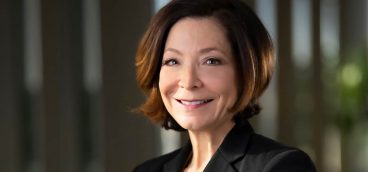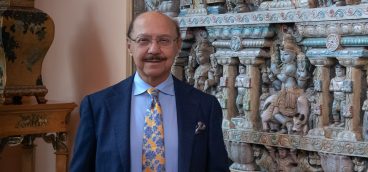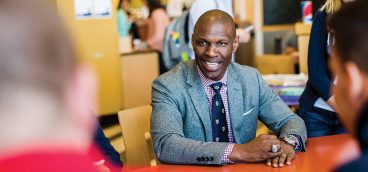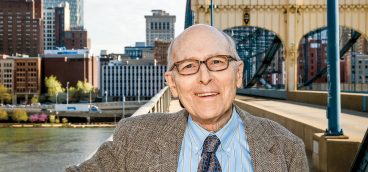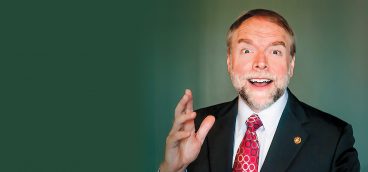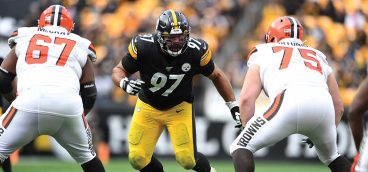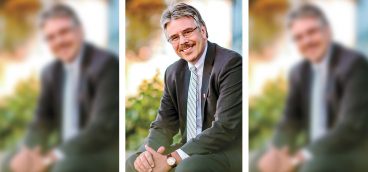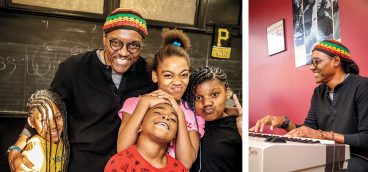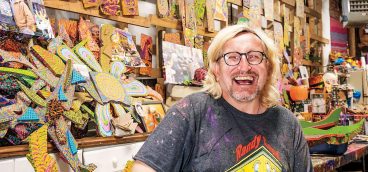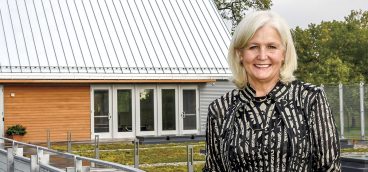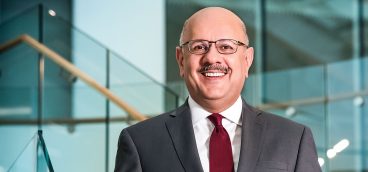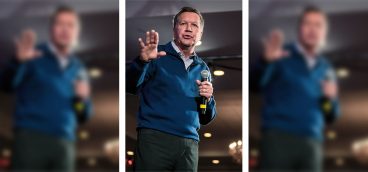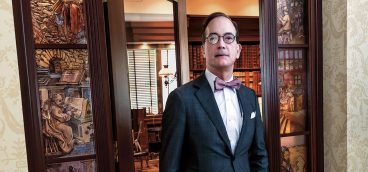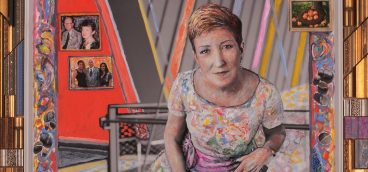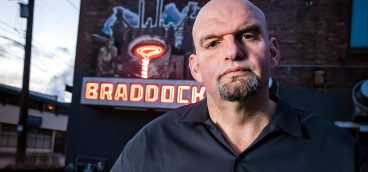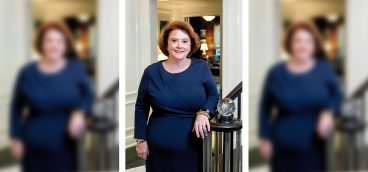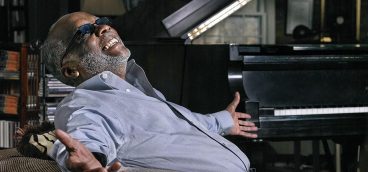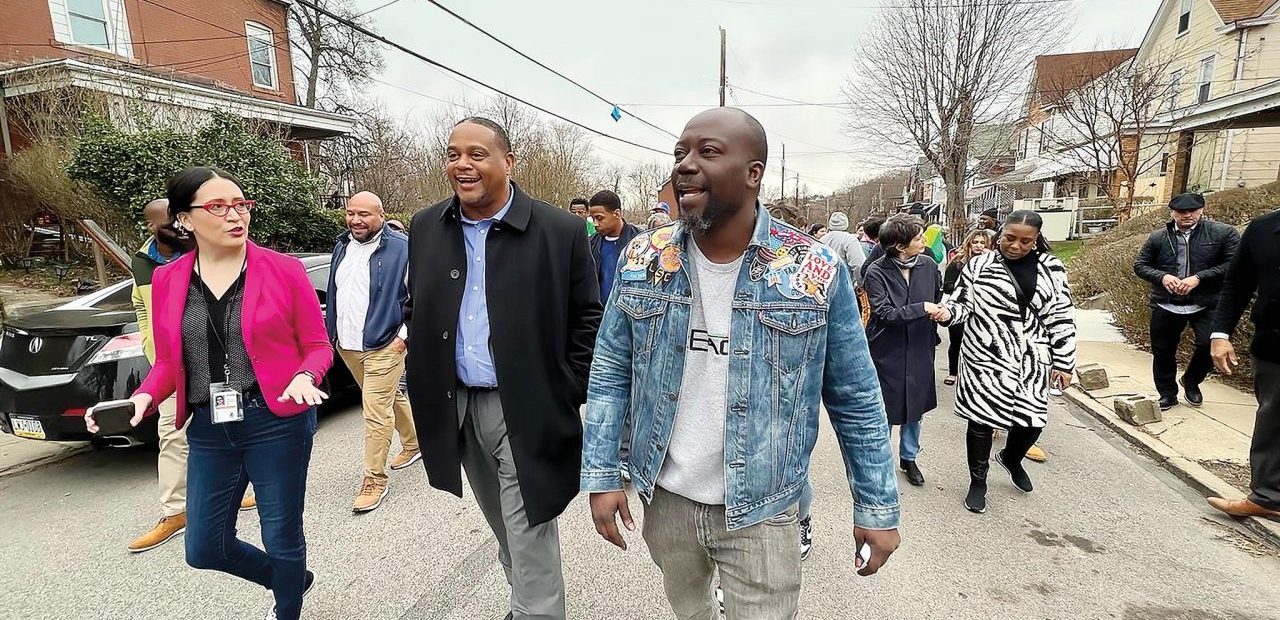
I have to say that it feels good to be the mayor of my hometown, to be connected to the place where I was born and raised. My family is from the Hill District, but I was actually born in South Oakland. We were only the second black family to live on Lawn Street.
My mother was young, 15, when I was born and needed a lot of help, so I stayed with my grandmama for a while. When she moved to East Liberty, I moved with her, in August 1977, when I was 7. Before long, my mom moved there, too, and when she did, I moved in with her. So, I grew up in public housing — “Section 8.”
On my mom’s side, there’s me and my sister, Shadé. We grew up together. On my dad’s side, there is my sister Valerie, my brothers Jacob and Philip, my sister Latoya, and my sister Janese. Sadly, in 2016, Janese was shot and killed one night by a man who had followed her out of a bar in the Homewood section of town.
Janese’s death affected our family deeply. I’d never seen anyone put into a body bag before, let alone a loved one. I was 46 at the time, but a traumatic experience like that is difficult to go through at any age. To be honest, a lot of it is a blur to me now. But the actions of my father, who delayed his retirement to take in and raise Janese’s three children, were nothing short of heroic. My dad was just 17 when I was born, and wasn’t prepared to be the father that I needed. So, to see him, after so many years, grow into the father’s role by being there for my nephew and twin nieces was truly awe-inspiring. That’s the power of family.
Ed Gainey
Faith in Leadership
– 61st Mayor of Pittsburgh (2022)
– Board of Directors, Urban Redevelopment Authority of Pittsburgh (2014-2022)
– Member, Pennsylvania House of Representatives, 24th District (2013-2022)
– Chairman, Pittsburgh Democratic Party Committee (2010)
– Economic Development Coordinator for Mayor Luke Ravenstahl (2007-2012)
– Special Projects Manager for Mayor Tom Murphy (2002-2006)
– Legislative aide to Pennsylvania State Representative Joseph Preston, Jr. (1997-2002)
– Community Development Organizer, East Liberty Development, Inc. (1996-1997)
– Morgan State University, B.S., Business Management (1994)
When we lived in Oakland, police officers would often come knocking on my grandmama’s door just to see how she was doing. They really looked after the neighborhood. East Liberty, however, was different. By the time we moved there, the “war on drugs” was building. It was still a good community, and I made a lot of friends there, but 80 percent of the households were headed by single moms, and all were poor.
I started school at Dilworth Traditional Academy, then went on to the Holy Rosary School. In eighth grade, I left Holy Rosary and attended Central Catholic for two years. In the end, in 1988, I graduated from Peabody High School and headed off to college — the first person in my family to do so. But it would take time for me to get a proper college education. As a young man, I didn’t really understand the value of it.
I went to Norfolk State University in Virginia, and lasted just one semester, having earned only a 1.8 GPA. Why did I do so poorly? At 18, I was too immature to be so far from home. And I just wasn’t focused. I had no discipline. So, I left Norfolk and returned home to attend the Community College of Allegheny County for several semesters to try and raise my GPA. That’s when I finally got focused. Eventually, I graduated with a bachelor’s degree in business management from Morgan State University, in Baltimore, in 1994.
So, did I ever think that I’d go into politics or become the mayor of my hometown? No. Growing up, I had never met a politician. None ever knocked on our door. None came to our school, either. So, how could I aspire to be an elected official when I didn’t even know what that was? I aspired to be a basketball player. After all, that’s what was happening in the neighborhood. It was all we knew. So, I played for Holy Rosary, and then for Peabody. I wasn’t at Norfolk long enough to even try to play, and when I went on to Morgan, I decided to hang up my sneakers for good, becoming laser-focused on getting a college degree. My mom made sure of it. The power of her love fueled my desire to become somebody, and I was determined to leave Morgan State an educated man.
Early on at Morgan, I remember going to class, and my professor asked me what I was doing there. “Your lesson’s not in the classroom,” she said. “It’s out there,” and she pointed out the window to a gathering of students who were holding a sit-in. Now, I’m from Pittsburgh. Generally, we don’t protest here. Nevertheless, I decided to join my classmates to call for an increase in government funding for historically black colleges like Morgan State. We all marched Downtown to city hall where I met the first elected official I’d ever known — and he was black like me. That person was a gentleman named Kurt Schmoke, who was then the mayor of Baltimore. Mayor Schmoke helped us to secure more funds for Morgan State, and it was the first time that I witnessed how the system of government works. That got me thinking, “Maybe I should get involved in politics, at some level.”
After graduating from Morgan State, I returned to Pittsburgh where I learned of an organization called “East Liberty Development, Inc.” It had been closed down for a while due to racial tensions between the nonprofit and the community, but it was about to reopen. So, I went in to see its interim director, Wheeler Winstead. I knew they had no money, but I wanted to learn about community development, so I told Mr. Winstead that I’d work for free, if he showed me the ropes. If he liked my work, when the organization acquired some funding, he could pay me then. In a short time, I learned much about community development. I knew many mamas and grandmamas in East Liberty. And I knew a lot of the business owners, too. So, I devised a workable plan for the community to act on, and felt good about that.
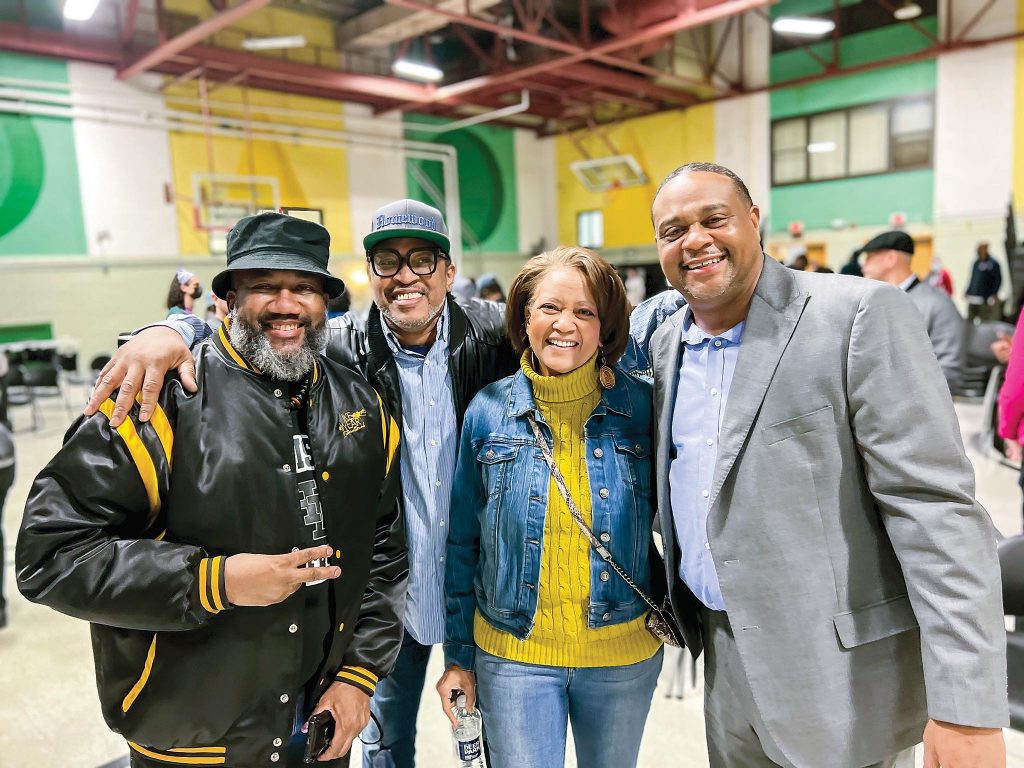
Mayor Ed Gainey with supporters after his first community meeting in Homewood at the Community Empowerment Association in March.
With that experience under my belt, I left East Liberty Development and went to work for a Pennsylvania state representative named Joseph Preston, Jr., who served the 24th District, which includes East Liberty. I stayed with Joe for six years, then moved on to work for two Pittsburgh mayors in succession: Tom Murphy and Luke Ravenstahl.
For Tom, I was “special projects manager.” He was a true visionary, and a lot of community development took place during his administration. He was focused on that. I also worked for Luke Ravenstahl to promote economic development. Luke was very unlike Tom Murphy. He was more charismatic, but a visionary he was not. Luke grew up in a political family and had been president of Pittsburgh City Council before becoming mayor, having succeeded Bob O’Connor, who died unexpectedly only six months into his first term. Luke was just 26 years old when he took office. It was a big job to tackle for someone so young. Anyway, working in the Mayor’s Office, I couldn’t help but learn a lot. For me, the place was like an “institution of higher learning,” and I wanted to absorb as much as I could, and I did.
After that, in 2004, I ran for Pennsylvania state representative for the first time, and didn’t even make it onto the ballot. The second time, in 2006, my race was closely contested, but I lost by only 94 votes. Then, on my third try, in 2012, I defeated my old boss, Joe Preston, with two-thirds of the vote. My district included many majority-black neighborhoods in Pittsburgh, including East Liberty, Homewood, East Hills and Lincoln-Lemington, plus the demographically similar municipality of Wilkinsburg. I became a member of the Pennsylvania Legislative Black Caucus, and served in the State House for the next eight years.
So, why did I decide to seek elected office? You know the old saying: “If you want to make a difference, you’ve got to get in the game.” I believed that things could always get better for everyone. If you don’t believe in something, you can’t make it happen. So, you must have faith because faith is part of leadership.
During my years as a state representative, I realized that my district and Pittsburgh as a whole were changing. I witnessed protests for social, economic, LGBTQIA, and environmental justice, and learned how sensitivity to these issues was beginning to transform my hometown, organically. But we didn’t have the kind of leadership that was needed to help the city blossom. So, in 2021, I decided to run for mayor. I defeated the incumbent in the Democratic primary, 46 to 39 percent, and went on to win the general election with 70 percent of the vote, thus becoming the first African-American to be elected mayor in Pittsburgh’s history.
Being mayor is a big responsibility. So, how will I lead? My leadership style is basically bottom-up. I always ask my staff, “What do we have to do to make things happen?” Most importantly, we must have a core set of values: “This is what we stand for; here’s where we want to go; and here’s how we’re going to get there.” We want Pittsburgh to be a safe city. We also want it to be affordable, a place where everyone can live and thrive. As for safety, we plan to work hard on improving the relationship between the police and our local communities. We must build trust. And while we are not opposed to gentrification, per se, we intend to push for an increase in the availability of affordable housing, to give poor people a leg up.
Think about the issues that my administration had to face in its first 90 days. We had six snowstorms, but not enough funding to handle them. All we could do was promise that we would learn to do better. And with each snowstorm, we did. The reality was, all the main streets in the city had been plowed. Our Department of Public Works staff worked 16-hour shifts to accomplish this. But when you don’t have the proper equipment, and only 80 percent of the personnel needed to do the work, plowing all secondary streets is not possible. Fortunately, we were able to find discretionary funds to buy six more trucks, and to lease six others. And when our last storm hit, leaving six inches of snow, we received very few complaints.
The municipal challenge of snow removal enabled us to demonstrate that we could handle adversity. But before long, we also had to deal with the tragedy of a young person getting shot and killed near Oliver High School. Then there was the Oakland Crossing development, for which we had to make sure that the agreement would include affordable housing and a grocery store for residents, all the while protecting the park and green spaces. And we were successful. That deal marked the first time a private developer agreed to accept Pittsburgh Housing Authority vouchers to subsidize housing for lower-income residents.
Next came the collapse of the Fern Hollow Bridge, and the tragic death of a man named Jim Rogers, who was tased multiple times by local police and died. All of this happened at a time when we were still not fully staffed. In Pittsburgh, the mayor’s race is essentially over in May, and you have from May to January to put your transition team and personnel in place. But we didn’t have that because we still had to win the race in November. So we only had from November to January to get things together.
As I said, my family is from the Hill District, a part of the city that has a rich history and was once a great source of pride for the local African-American community. The Hill features some wonderful real estate that is prime for the development of affordable housing. The area is also prime for a revitalized commercial district. Many merchants, shops, restaurants and clubs could be located along its streets. Considering the rebirth of a historically racially and ethnically mixed community, I think it’s time that we talk seriously about the economy — and diversity.
I believe that economies are made up of people, and our people are diverse. Now, how can we ensure a middle-class life for not only white people, but for black and brown citizens as well? Sadly, in Pittsburgh, no black or brown community is “middle class.” Every community where the residents look like me is locked in poverty. So, as citizens, we must work to ensure that we’re building a city where all people have a place to live and access to opportunity.
What I like about my job is that no day is ever boring. I’m still learning, every day. I always tell my team, “The more we learn and create an environment of learning, the more we’ll be able to accomplish.” I don’t ever want to come to work and talk only about what we know. I want to talk about what we’ve learned. If we all leave here at the end of each day knowing more than we did the day before, we will do just fine.
It pleases me that, in recent decades, our nation’s history has become a bit clearer. Police batons, attack dogs, water hoses, lynching and mass incarceration are all part of that history. There’s a lot of pain out there, and a lot more that we need to acknowledge. I have to laugh when people say, “Can’t we just move forward?” We cannot move forward until we understand where we’ve been. We must address the fact that certain things really happened in our history. But my team has heard me say, many times, that I’m proud of my history, even the part about slavery. Our people’s story is a remarkable one. Think about it. We were brought here on ships. We didn’t speak the language. We were given new names. We watched our mothers be brutalized; our fathers, whipped and even murdered. We were sold as property. Under “Jim Crow,” we were considered only three-fifths human. We couldn’t go to school. We had no access to capital. We couldn’t own land. And not until the passage of the 15th Amendment could black men vote. Yet, while there is a lot that must be accounted for, we can also talk about the progress that has been made.
The “civil rights movement” put an end to “Whites here; Coloreds there.” Then came “Affirmative Action,” which gave our people better access to education. And let’s not forget that we — brown, black a people coming that far in such a short period of time?
When I look back, and forward, I am hopeful. Hope changes things. But I tell my children — my wife, Michelle, and I have three — that there’s a difference between wishing and hoping. A wish is when you sit and wait for something to come your way. Hope is patiently seeking what you want, and putting in the time and effort that’s required to get it. For me, life is more about hope every single day. And to create more hope, we all must continue to learn. It doesn’t have to be about anything major. Small things multiply.
One thing I’ll say about my executive team, that I love so much, is that they all come from diverse backgrounds. The richness that they bring to the table to solve problems is wonderful because they all see issues through the prism of their own life histories. The give-and-take between our team members will determine, collectively, how we should move, and that adds value to our end product. And what are we saying when we talk about “value”? Learning, tolerance, understanding and love. That’s the reality I see.


